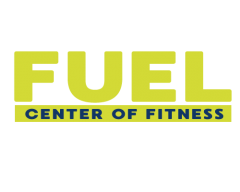The optimal amount of exercise is always a burning question without a universal answer.
Many factors should be considered. We will review them in this article.
Number of Exercises Per Workout Depending On A Goal
The focus of exercises in the gym may vary:
4. Improvement of muscle tone
5. Rehabilitation after injuries, etc.
To establish how many exercises you need to do per workout, you should first define your goal.
The Goal is Muscle Mass
It is better to do 6-8 exercises per workout to gain muscle mass.
As a rule, 1-2 big muscle groups and 1-2 small ones are worked out during one session (split).
For large muscles such as legs, chest and back 4-5 exercises are performed on average, while 3-4 exercises are enough for small muscles (shoulders, biceps, triceps).
Shins, abs, forearms, and neck demand only 1-2 movements.
The Goal is Strength
The optimal number of exercises for developing strength parameters is 4-6 per training.
Strength classes have their own specifics. Unlike bodybuilder style you don’t need to pump your muscles. You work out the movements instead. Weights are also used by an order of magnitude more.
Such training just can’t be extensive because the load is at the limit.
The Goal is Perfect Body Shape and Endurance
The work on body shape and development of endurance implies a large number of exercises per workout – 10-15.
More isolation movements are needed to improve the detailing and the shape of the muscles. This leads to such a large number of exercises.
Such loads often demand using supersets, trisets or a circular method. Muscle groups rotation during the workout allows you to do more within a shorter period.
Training Level
The level of fitness, that is, how well your body is adapted to the workout, also affects the amount of training.
Beginners
Regardless of the focus of the workout, the optimal number of exercises for beginners is 8-10.
The main goal is to smoothly get involved in the power load, master the correct technique, strengthen the ligamentous apparatus and bring the muscular system into tone.
Only after these tasks are solved, you can move on to the next stage, which is correction of your body shape or the main physical qualities growth.
This is why all programs for the beginners are pretty much the same.
This is also true when we talk about the number of exercises.
All major muscle groups – back, chest and legs – are usually pumped at once with two movements for each group.
Strengthening the muscle corset of the spine – abs and lower back (1-2 exercises for each group) is also needed.
Intermediate Level
For the intermediate level in training for mass and strength the optimal number of exercises is 6-8.
Split training is often used in this case when one large and one small muscle group is pumped during a workout.
For one muscle group 3-4 exercises are performed. For small muscles 2-3 exercises, and one exercise is needed for abs and lower back.
When working on your body shape the usual number of exercises is 10-15. In this case 1-2 isolating movements are added to each muscle group.
Advanced Level
Experienced athletes already know their bodies well and the number of exercises is highly variable.
However, the general pattern for muscle and strength growth is the same – the higher the level of training is, the less exercises are needed. But in the case of body shape exercises the picture is opposite.
A high level of training allows you to perform a larger volume of load, which is also reflected in the increase in the number of movements (15-20).
For example, when using supersets or trisets.
Conclusion
The main indicators of how many exercises you need to do per workout are the level of training and the main target.
When exercising for mass and strength there is a regularity. The more trained a person is, the less exercises are needed.
In case of the body shape training the situation is opposite. With the growth of training the number of movements increases.




